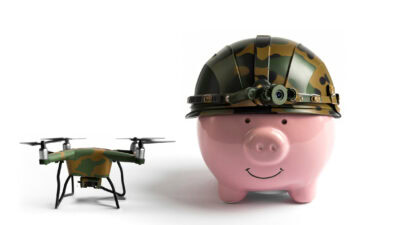With the Delta variant paralysing much of Australia, the market is currently very much focused on COVID-19 recovery shares.
However, multiple professionals have warned investors not to get sucked in by every pandemic recovery beneficiary.
Forces at play during the current lockdowns are very different to the investing environment during the first and second waves last year.
No big government bazooka this time
According to Ophir Funds co-founders Andrew Mitchell and Steven Ng, companies rebounded quickly during the 2021 financial year because of "mammoth" government stimulus.
"It was on a scale not seen since World War II," they wrote in their latest letter to clients.
"It mostly covered April to September last year and was designed to help get the economy back on its feet given the nationwide lockdown in the June quarter."
Despite this, most ASX-listed companies have been reluctant to provide guidance for the 2022 financial year. Mitchell and Ng have no doubt why this uncertainty reigns.
They wrote: "Australian governments brought the big bazooka in 2020. But so far this year it's been more like the peashooter!
"Business support payments are much more targeted at the non-listed SME segment and are a fraction of those provided in 2020. Individual COVID disaster payments, on a per-employee basis, are closer but still trail what was provided last year."
While there might be some pent-up consumer demand when the Delta-induced lockdowns end, the Ophir team thinks it might be overstated.
The ASX shares to avoid for COVID recovery
While Mitchell and Ng generally reckon ASX shares exposed to the 'reopening' economy will be rewarded by investors, they will steer clear of one type of business.
"We've been conscious not to be in positions that are overly reliant on government-supported demand," they said.
Sage Capital's latest memo to clients was along the same lines.
"With the consumer more supported than stimulated by government spending in this round of lockdowns, consumer discretionary company earnings will suffer for the first half of fiscal 2022."
The Ophir team is also avoiding stocks that rocketed up in November last year.
"We … believe cyclically orientated businesses are unlikely to get the same boost they did last year on the initial vaccine news given earnings and economic growth momentum appears to be peaking, which sees us with a greater balance between these and more defensive type companies."
With both the US Federal Reserve and Reserve Bank of Australia planning to reduce quantitative easing, Mitchell and Ng are "more cautious" on high-growth stocks on high valuations.
So, which ASX recovery shares do we go for?
Sage Capital is sticking to reopening beneficiaries that have the market power to set their own prices. And one sector stands out with these criteria.
"In this context, we remain long insurers with the pricing power to drive premiums higher."
Ophir agrees with this sentiment, although Mitchell and Ng think the inflated costs will be temporary.
They wrote: "We continue to scan our portfolios to ensure the companies we invest in have some pricing power in reserve, should these higher costs become more pervasive."









